David Keating
Endless Nameless I / II
4 Solos for Kunsthaus Baselland
24.1. —
23.3.2014
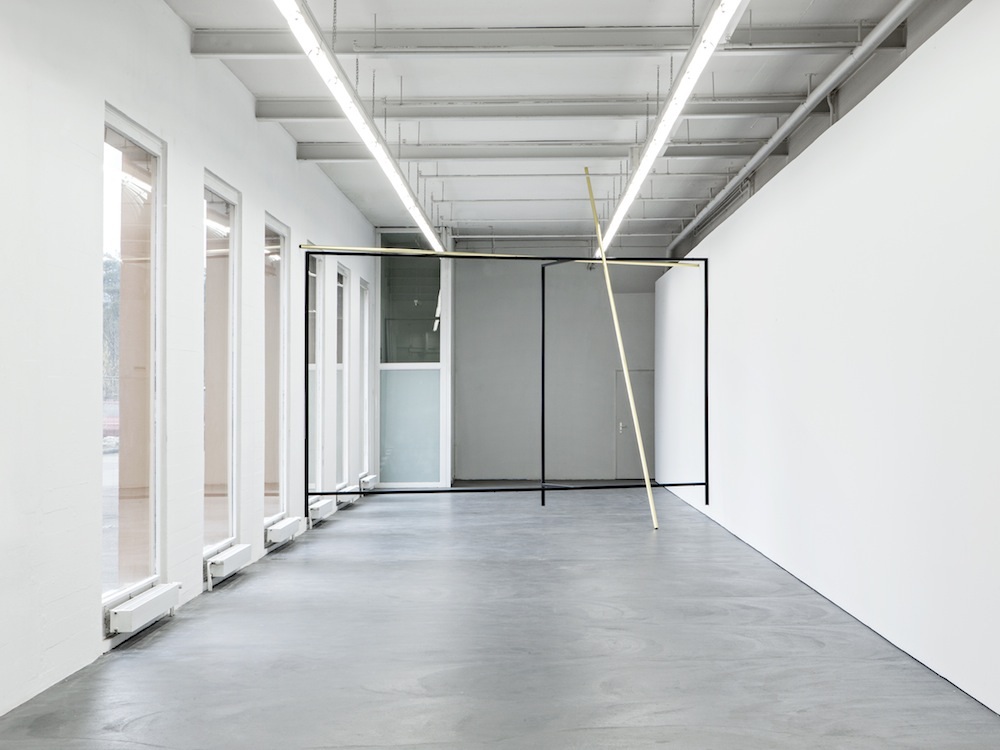
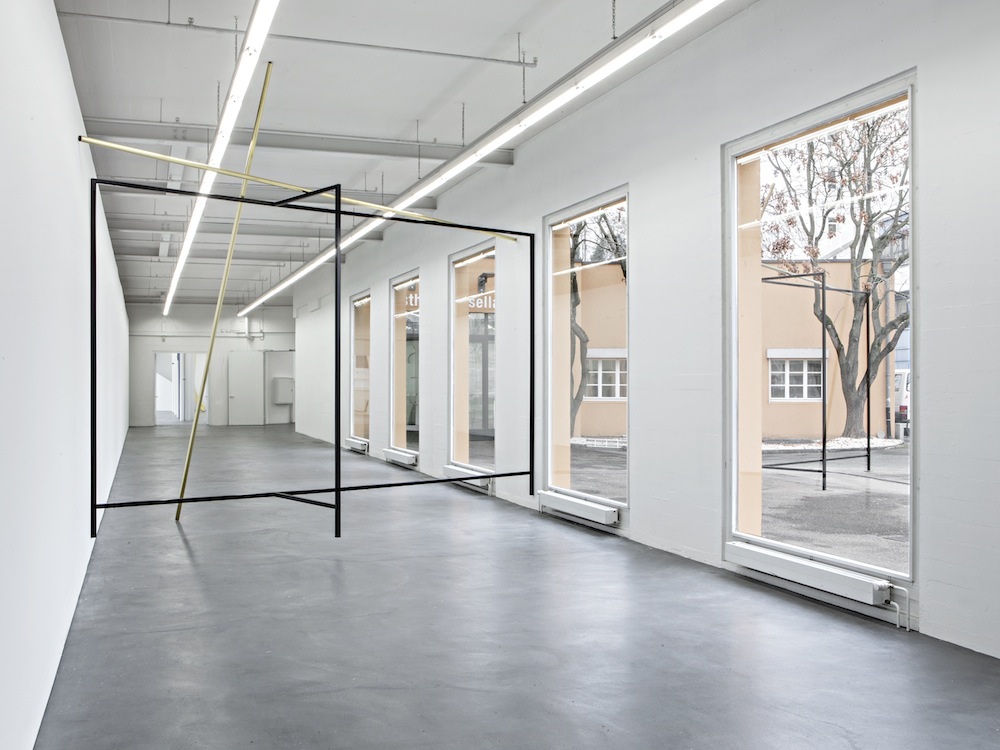
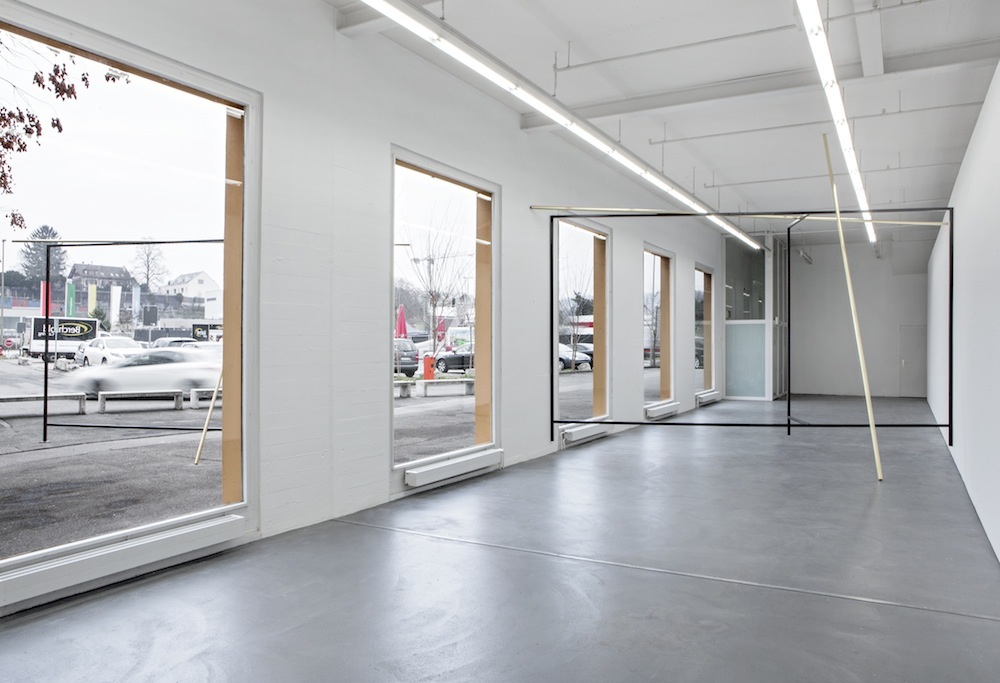
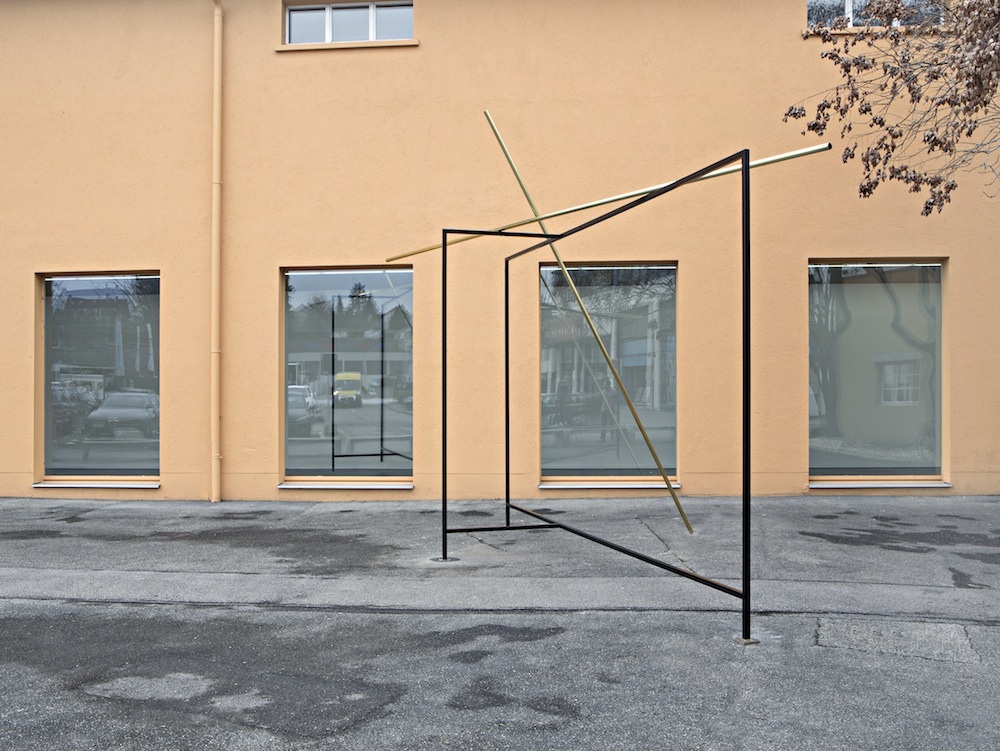
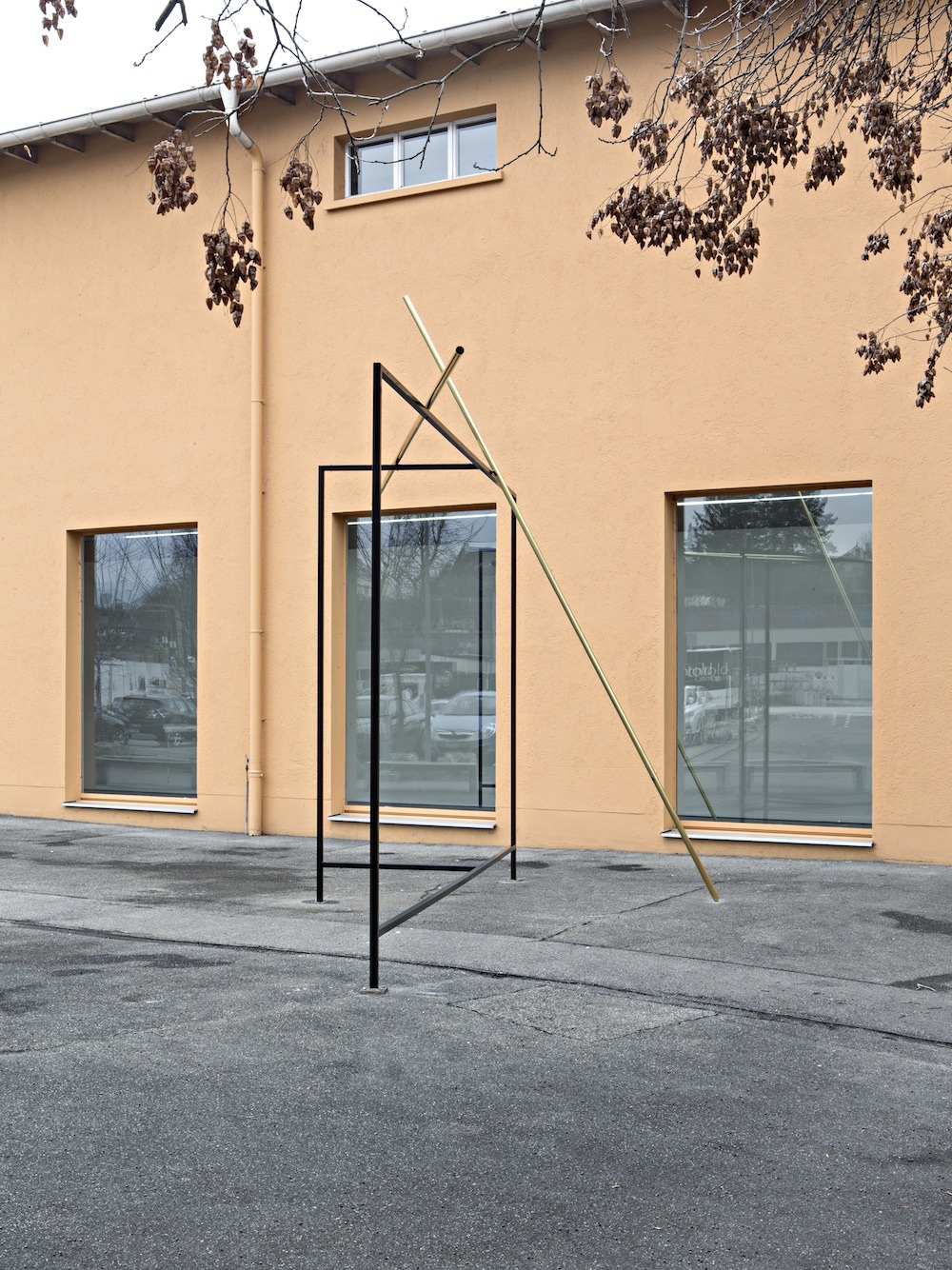
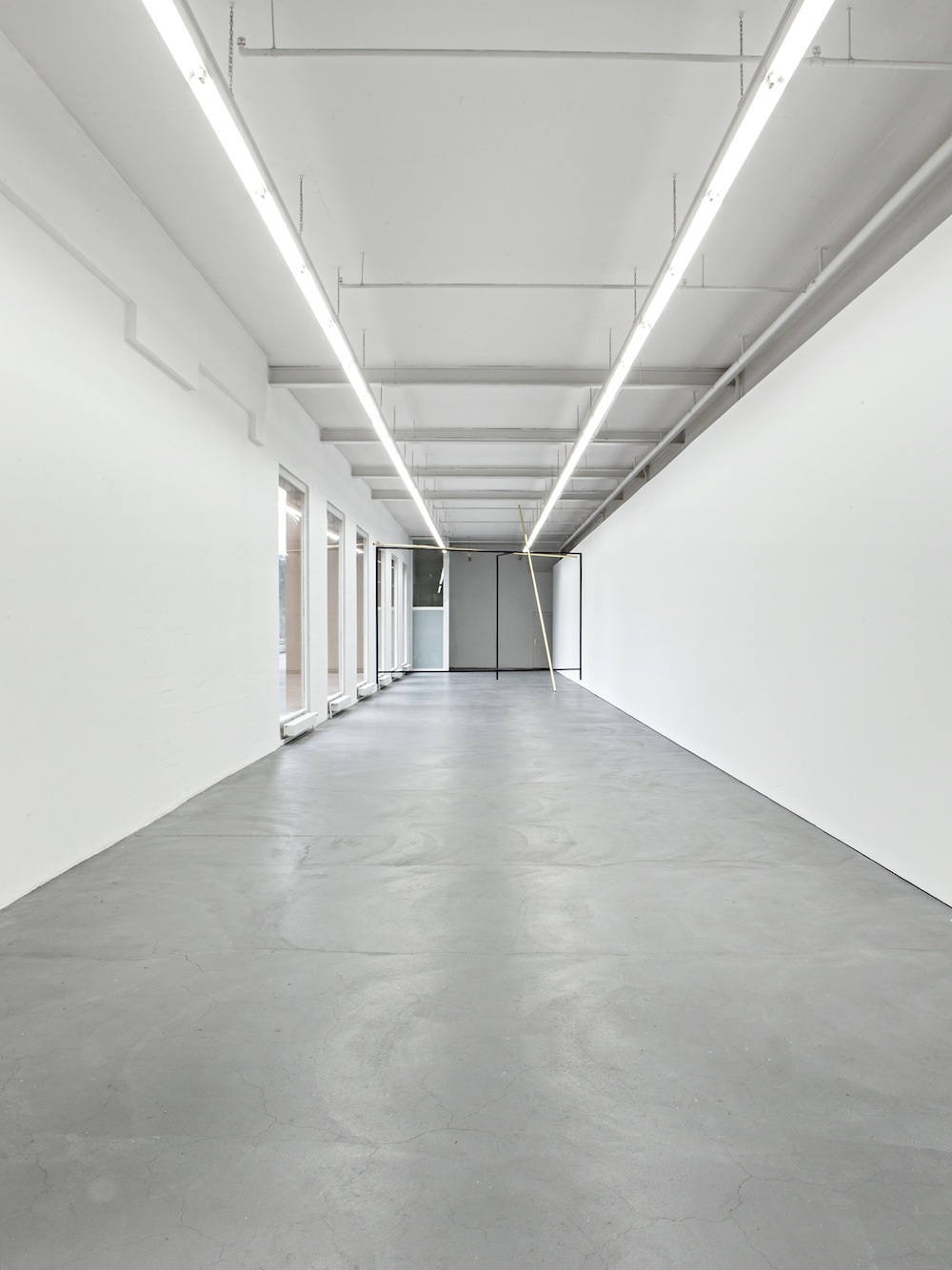
Selected press coverage
Fascinated by the idea of comprehending sculptural objects as three-dimensional lines and as expansive drawings, David Keating creates a large sculpture specifically for the exterior space of the Kunsthaus Baselland and complement this with a further sculpture — a kind of doubling of the first — in the attached annex and thus in an interior space.
David Keating has developed two works from the spatial relationships of the Kunsthaus Baselland, one of which can be experienced outside, one in the interior. In a kind of precise doubling, both large-scale sculptures from steel and brass, identical in their structure and material nature, describe a line through the architecture of the building and the design of its forecourt.
The steel sculpture inside stands fixed on three contact points and expands — like a frame — in height and width. Fascinated by the interplay of different materials, Keating contrasts this black-varnished steel triangle with two brass pipes of equal length, which are, it appears, leaning lightly on the sculpture or lying on top of it.
The sculpture inside, which has exactly the same proportions and materials as the one outside, makes a fundamentally different experience possible due to the immediate surroundings into which it fits. It almost gives the impression of resisting the architecture — the walls and the ceiling. Despite its weight, it seems to hover at a certain distance above the floor, and in so doing it puts the impression of weight, that the visitor just gained from the exterior sculpture, into perspective. Only the brass pipe that leans on the sculpture within the Kunsthaus seems to fix it to the ground.
Thanks to their minimal execution — like a three dimensional drawing in space — both sculptures allow the viewer to focus their gaze on the steel triangle, on the one hand, and on the other, to direct their concentrated and focussed attention through the sculpture to the urban or architectural environment beyond as if it were a frame.
The theme of a series of Keating’s preparatory works is the question of how much, or how little, surface and materiality a sculpture needs in order to gain presence and hold its ground within an interior but also outside, a question that is key for him. This is also about showing how a sculpture can further strengthen its inherent architectural space and make the experience of its characteristics more precise. Keating’s works are always about formulating and opening a space for the person within it, not about possessing it.
Text by Ines Goldbach
The exhibition was generously supported by Stiftung Roldenfund and nationale suisse.
During David Keatings exhibition the three solo exhibitions by Boris Rebetez, Karin Hueber and Felix Schramm were also on display.